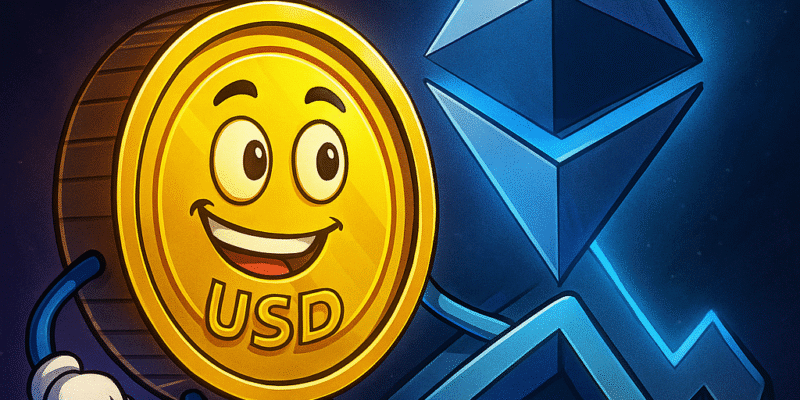Crypto billionaire Justin Sun has expanded his algorithmic stablecoin USDD onto Ethereum, marking a significant shift for the project. Previously tied mainly to the Tron ecosystem, USDD now has access to one of the largest and most active blockchain communities.
To attract users, the Ethereum version of USDD offers yield rewards of up to 12 percent APY. These rewards arrive automatically in USDD through the Merkl Dashboard, with early adopters also receiving airdrops. In the coming weeks, a savings version called sUSDD will roll out, designed to provide built-in on-chain yield for holders.
Security and stability are being emphasized. USDD’s Ethereum launch came alongside a CertiK audit, one of the better-known security reviews in the crypto space. It also introduced a Peg Stability Module, allowing users to swap USDD with stablecoins like USDT and USDC under a standardized, low-slippage framework. The goal is to reassure both developers and users that stability is not an afterthought.
Still, challenges remain. The ratings agency Bluechip has given USDD an “F” grade, warning that its collateralization level sits at an estimated 53 percent. For critics, this raises concerns about whether the stablecoin could hold its value during turbulent market conditions. The collapse of TerraUSD is still fresh in memory, and any algorithmic stablecoin must prove that its safeguards are stronger than those that failed before.
At the same time, Sun is betting on growth. By moving to Ethereum, USDD is positioning itself in front of more developers, DeFi platforms, and users. The strategy is to build credibility through accessibility, rewards, and transparency. If adoption grows, the perception of risk could shift over time.
The question many are asking is whether Justin Sun’s USDD stablecoin can realistically compete with Tether (USDT). Tether continues to dominate the stablecoin market with a market capitalization that dwarfs all rivals. USDD, by contrast, is far smaller but is pushing into new ground with its combination of high-yield incentives and multi-chain expansion.
Whether this strategy succeeds depends on trust. If users believe in its backing and see real utility across platforms, USDD could grow beyond its niche. If doubts linger, the project may struggle to win market confidence no matter how attractive the yields appear.
For now, USDD’s launch on Ethereum is less about overtaking Tether immediately and more about proving that another algorithmic stablecoin can thrive in a space that remains cautious. The spotlight is now on Sun’s team to deliver on stability while building the partnerships that could make USDD a lasting player in the stablecoin market.

Comments